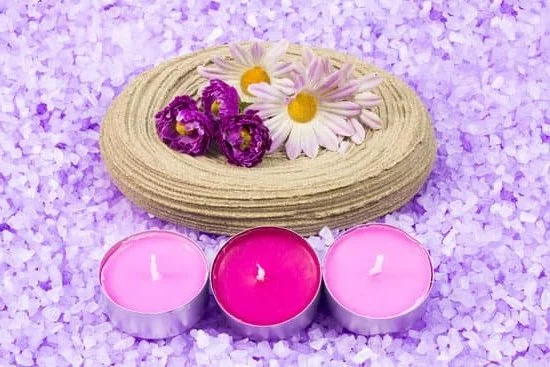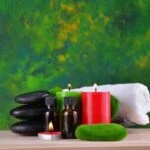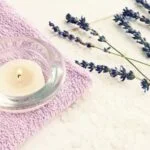Aromatherapy has been used for centuries as a natural way to promote physical and mental well-being. It involves using essential oils extracted from plants to enhance both the physical and psychological health of an individual. In this article, we will guide you on how to make your own aromatherapy oil at home, exploring the benefits and uses of this ancient practice.
Before diving into the details of creating your own aromatherapy oil, it is important to understand what exactly aromatherapy oil is and how it can be beneficial in your daily life. We will explore the various benefits and uses of aromatherapy oil, such as promoting relaxation, easing stress, boosting energy levels, and even alleviating certain physical ailments.
Choosing the right essential oils for aromatherapy is crucial in creating blends that cater to your specific needs. Essential Oils 101 will guide you on how to select the appropriate oils for your desired outcomes. Whether you are seeking relaxation, energy enhancement, or stress relief, understanding the properties of different essential oils is essential in achieving the therapeutic effects of aromatherapy. Stay tuned as we delve into gathering the ingredients and creating custom blends for your unique aromatherapy rituals.
Essential Oils 101
When it comes to making aromatherapy oil, the first step is choosing the right essential oils. Essential oils are highly concentrated plant extracts that have been used for centuries for their therapeutic properties. Each essential oil has its own unique aroma and beneficial effects, so it’s important to select oils that will suit your needs and preferences.
To choose the right essential oils for your aromatherapy oil blend, consider the desired effect you want to achieve. For example, if you’re looking for a calming and relaxing blend, you might choose lavender or chamomile essential oils. On the other hand, if you’re seeking an energizing and uplifting scent, citrus oils like lemon or orange could be a good choice.
It’s also important to consider any potential allergies or sensitivities when choosing essential oils. Some individuals may have adverse reactions to certain oils, so it’s best to do a patch test before using any new essential oil. Additionally, always purchase high-quality, pure essential oils from reputable suppliers to ensure that you are getting a safe and effective product.
| Desired Effect | Recommended Essential Oils |
|---|---|
| Calming and Relaxing | Lavender, Chamomile |
| Energizing and Uplifting | Lemon, Orange |
Gathering the Ingredients
Essential Oils
To make aromatherapy oil at home, you will need essential oils. These oils are derived from different parts of plants and flowers, and each one has its own unique properties and benefits. Some popular essential oils for aromatherapy include lavender, peppermint, tea tree, eucalyptus, and chamomile. When choosing essential oils for your homemade aromatherapy oil, consider the scents that you enjoy as well as the specific benefits you are looking to achieve.
Carrier Oils
In addition to essential oils, you will also need carrier oils. Carrier oils are used to dilute the essential oils and help disperse them when applied to the skin. Common carrier oils include jojoba oil, sweet almond oil, coconut oil, and olive oil. When selecting a carrier oil for your homemade aromatherapy oil, consider your skin type and any potential allergens or sensitivities.
Storage Containers
To store your homemade aromatherapy oil, you will need dark glass containers with tight-fitting lids. Essential oils can degrade when exposed to light and air, so it is important to store them in a dark glass bottle to maintain their potency. Be sure to label your storage containers with the date of creation and the ingredients used in your custom blend of aromatherapy oil.
By gathering these ingredients – essential oils, carrier oils, and storage containers – you will be well-equipped to begin creating your own custom blends of aromatherapy oil at home.
The Art of Blending
Creating your own unique aromatherapy oil can be a fun and rewarding experience. By blending different essential oils together, you can customize the scent and therapeutic properties to suit your personal preferences and needs. Here’s a guide on how to make aromatherapy oil at home.
Choosing the Right Essential Oils
When it comes to creating your own aromatherapy oil, the first step is to choose the right essential oils for your blend. Consider the therapeutic properties of each oil and how they can work together to achieve your desired outcome. For example, if you’re looking for a calming blend, you might choose lavender, chamomile, and frankincense. If you want an energizing blend, consider using oils like peppermint, rosemary, and lemon.
Understanding Scent Profiles
In addition to their therapeutic properties, it’s important to consider the scent profiles of the essential oils you plan to blend. Some oils have strong, earthy scents, while others are floral or citrusy. Understanding how different scents complement each other will help you create a balanced and harmonious blend.
Experimenting With Ratios
Once you’ve chosen your essential oils, it’s time to experiment with different ratios to find the perfect blend. Start by adding a few drops of each oil into a small bottle or container and then adjusting the ratios until you achieve the desired scent and therapeutic effect. Keep track of your recipes so that you can replicate successful blends in the future.
By following these guidelines on how to make aromatherapy oil at home, you can create custom blends that cater to your specific needs and preferences. Whether you’re looking for relaxation, energy, or stress relief, blending your own aromatherapy oil allows you to harness the power of nature’s healing properties in a way that is uniquely tailored to you.
Step by Step Guide
Making your own aromatherapy oil can be a creative and fulfilling process. Here’s a step-by-step guide on how to make aromatherapy oil at home:
1. Gather your materials: You will need a carrier oil, such as almond, coconut, or jojoba oil, and your chosen essential oils. Make sure to use high-quality, pure essential oils for the best results.
2. Choose your essential oils: Decide on the scent and therapeutic properties you want for your aromatherapy oil. For relaxation, lavender and chamomile are popular choices. For energy, consider using citrus oils like lemon or orange. Research the properties of different essential oils to create a blend that suits your needs.
3. Dilute the essential oils: It’s important to dilute essential oils with a carrier oil before using them on the skin. A common dilution ratio is 3-5% essential oil to carrier oil (or about 15-30 drops of essential oil per ounce of carrier oil). This helps prevent skin irritation from the concentrated oils.
4. Mix your blend: Once you have decided on your essential oils and carrier oil, carefully measure and mix them in a clean glass bottle or rollerball container. Gently shake the bottle to thoroughly blend the oils together.
5. Label and store: Be sure to label your aromatherapy oil with its ingredients and date of creation. Store it in a cool, dark place away from direct sunlight or heat, as this can affect the quality of the oils.
By following these steps, you can create your own custom aromatherapy oil tailored to your specific preferences and needs.
Safety First
When it comes to creating and using aromatherapy oils, safety should always be the top priority. Essential oils are highly concentrated and potent, so it’s important to handle and store them with care. Here are some tips for properly handling and storing aromatherapy oil at home:
1. Keep essential oils out of reach of children and pets: Essential oils can be harmful if ingested, so it’s crucial to store them in a place where they cannot be accessed by little ones or animals.
2. Use caution when applying directly to the skin: Before applying any essential oil to your skin, it’s important to dilute it with a carrier oil like coconut or jojoba oil. This helps prevent skin irritation or adverse reactions.
3. Store essential oils in a cool, dark place: Exposure to light and heat can cause essential oils to degrade more quickly. To preserve their potency, store them in a cool, dark cabinet away from direct sunlight.
4. Be mindful of allergies and sensitivities: Not everyone reacts the same way to essential oils, so it’s important to be aware of any allergies or sensitivities you or your family members may have. Always perform a patch test before using a new oil topically.
By following these guidelines, you can ensure that you safely handle and store your aromatherapy oils, making them a valuable addition to your wellness routine.
Aromatherapy Oil Recipes
Aromatherapy oils are essential oils that are used in aromatherapy for their therapeutic properties. They can be used to promote relaxation, boost energy, and relieve stress. Making your own custom blends of aromatherapy oils allows you to tailor the scents to your preferences and needs. Here’s how to make aromatherapy oil at home.
To make your own aromatherapy oil, you will need a carrier oil such as jojoba or sweet almond oil, as well as your choice of essential oils. For relaxation, consider using lavender, chamomile, and bergamot essential oils. For an energy boost, try blending peppermint, eucalyptus, and rosemary essential oils. And for stress relief, consider mixing together frankincense, ylang-ylang, and sandalwood essential oils.
Once you have gathered your ingredients, the next step is to blend them together. You can use a dropper bottle to combine the carrier oil with the selected essential oils in the desired proportions.
For example, for a relaxation blend, you might use 10 drops of lavender oil, 5 drops of chamomile oil, and 3 drops of bergamot oil mixed with 2 ounces of carrier oil. Be sure to store your custom blends in a cool, dark place to preserve their potency.
| Essential Oils | Benefits |
|---|---|
| Lavender | Promotes relaxation |
| Peppermint | Boosts energy |
| Frankincense | Relieves stress |
Making Aromatherapy Oil a Part of Your Daily Routine
Incorporating aromatherapy oil into your daily routine can have a profound effect on your overall well-being. Whether you are seeking relaxation, energy, or stress relief, there are countless benefits to be gained from using aromatherapy oils in your everyday life. By understanding the benefits and uses of essential oils and learning how to make your own unique blends, you can easily incorporate aromatherapy into your wellness practice.
One of the keys to making aromatherapy oil a part of your daily routine is choosing the right essential oils for your needs. Whether you prefer floral scents like lavender and rose, or invigorating scents like peppermint and eucalyptus, there are endless possibilities for creating custom blends that suit your personal preferences.
With the proper ingredients and a step-by-step guide, you can easily learn how to make aromatherapy oil at home, allowing you to reap the benefits of these natural remedies whenever you choose.
Safety should always be a top priority when it comes to handling and storing aromatherapy oil. By following proper guidelines for dilution and storage, you can ensure that your essential oils remain potent and safe for use. By incorporating aromatherapy into your daily routine, whether through diffusers, massage oils, or bath products, you can experience the many benefits of these natural remedies while enhancing your overall sense of well-being.
Frequently Asked Questions
Can You Make Your Own Aromatherapy Oils?
Yes, it is possible to make your own aromatherapy oils at home. You can do this by combining essential oils with a carrier oil, such as almond or jojoba oil, to create a customized aromatic blend.
How Are Aromatherapy Oils Made?
Aromatherapy oils are made by extracting the natural oils from various parts of plants, such as flowers, leaves, bark, roots, and peels. This can be done through processes like steam distillation, cold-pressing, or solvent extraction to obtain the concentrated essential oils.
How Do You Make Aromatherapy Body Oil?
To make aromatherapy body oil, start by choosing a carrier oil and then adding a few drops of essential oils for fragrance and therapeutic benefits. It’s important to dilute the essential oils properly in the carrier oil to avoid skin irritation before applying it to the body for massage or moisturizing.

Are you looking for a natural way to improve your health and wellbeing?
If so, aromatherapy may be the answer for you.





